Vallisneria spiralis
Scientific name: Vallisneria spiralis
Family: Hydrocharitaceae
Maximum size reached under cultivation: 30 - 55 cm (11.81 - 21.65 inch)
014
Recommended pH range: 6.5 - 7.6
Recommended water hardness: 4 - 18°dGH (71.43 - 321.43ppm)
0°C 32°F30°C 86°F
Recommended temperature range: 22 - 28 °C (71.6 - 82.4°F)
Preferred propagation method: Runners
Native to: Europe
Growth rate: Fast
Recommended substrate: Fine gravel
Lighting requirements: Medium
Ideal placement in tank: Background
Family
Hydrocharitaceae
Common Names
Tape Grass, Eel Grass, Straight Vallisneria
Propagation
Vallisneria spiralis reproduces through runners, which spread beneath the substrate. These runners develop plantlets that will eventually grow their own root systems. Once the daughter plants are well-established, they can either remain connected to the mother plant or be separated and transplanted to another area of the aquarium. When planting, it is important to ensure the crown of the plant is kept above the substrate to prevent rotting. The crown is easily recognized by its lighter color compared to the rest of the plant. This fast-growing species quickly propagates, creating a dense and lush background in aquariums.
Difficulty
Easy. Vallisneria spiralis is a hardy plant that adapts well to a wide range of water conditions and is easy to care for, making it ideal for both beginner and experienced aquarists. It thrives under medium lighting and grows rapidly when given proper conditions.
Short Description
Native to tropical and subtropical regions of Europe, Vallisneria spiralis is also found across parts of Asia and North Africa, growing in slow-moving freshwater bodies like rivers and lakes. Commonly referred to as Tape Grass or Eel Grass, this fully submersible plant is known for its long, ribbon-like leaves that can reach heights of up to 55 cm (21.65 inches) in aquariums. Its fast-growing nature makes it a popular choice for aquascaping, especially as a background plant.
In the wild, Vallisneria spiralis produces flower stalks that rise to the water’s surface and break away to float before germinating. However, in aquariums, it reproduces primarily through runners. Despite its delicate appearance, it is very resilient, though care should be taken to avoid fracturing the leaves, as damaged leaves die off quickly.
Contrary to some beliefs, Vallisneria spiralis can be pruned using sharp scissors to manage its height and shape. It is also suitable for South European or North African biotopes, providing excellent shelter for fish, including small species like Bristlenose Catfish that enjoy climbing its leaves during feeding time. Due to its fast growth, acclimatization can be supported by fertilization, with JBL balls being a suitable choice.
Maintenance and Care
Vallisneria spiralis thrives in a wide range of water conditions, preferring a pH range of 6.5 to 7.6 and tolerating water hardness between 4 - 18°N (71.43 - 321.43 ppm). The ideal temperature range for optimal growth is between 22 - 28°C (71.6 - 82.4°F). It grows best in fine gravel substrates and adapts well to various water conditions with minimal fertilization. Regular pruning is required to keep the plant’s height manageable, especially in smaller tanks. Ensure that leaves are cut back with sharp scissors and remove any dying leaves at the base to maintain the plant’s health.
Compatibility
This plant is highly compatible with peaceful fish species and is often used in community tanks where its long leaves provide excellent shelter for small fish and fry. Its fast growth helps absorb excess nutrients, contributing to improved water quality and limiting algae growth. Avoid placing it in tanks with large herbivorous fish, which may nibble on its delicate leaves. Vallisneria spiralis is versatile and works well in low-tech setups without CO₂ injection, as well as more advanced, high-light tanks.
Submersion and Aquascaping
Fully submersible, Vallisneria spiralis is an excellent choice for aquascaping, particularly as a background plant. Its long, flowing leaves create a dynamic, natural effect in the aquarium, providing vertical interest and movement. The plant grows quickly, reaching the water surface and adding depth and structure to the aquascape. Its fast propagation through runners also makes it ideal for filling in empty spaces, and its adaptability to different lighting conditions ensures it fits well in a variety of setups. Whether you're building a South European or North African biotope, Vallisneria spiralis offers a lush, hardy, and attractive option for aquarists.
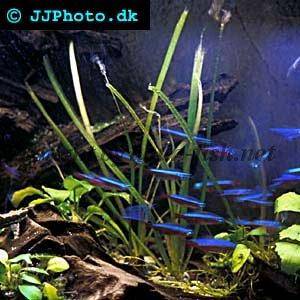
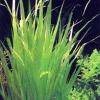 Blyxa aubertii
Blyxa aubertii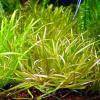 Blyxa japonica
Blyxa japonica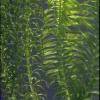 Egeria densa
Egeria densa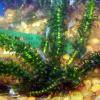 Elodea canadensis
Elodea canadensis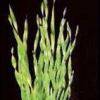 Vallisneria asiatica
Vallisneria asiatica Vallisneria contortionist
Vallisneria contortionist Vallisneria gigantea
Vallisneria gigantea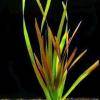 Vallisneria rubra
Vallisneria rubra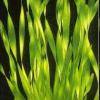 Vallisneria torta
Vallisneria torta